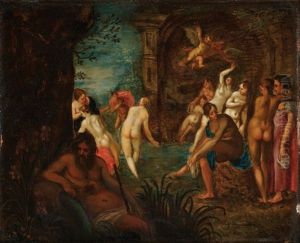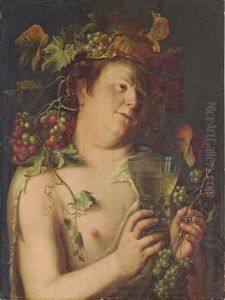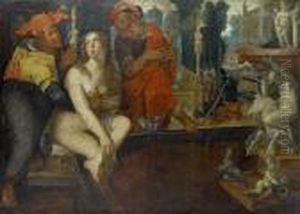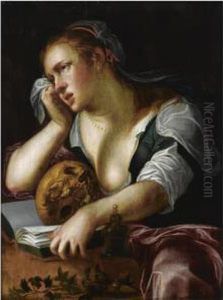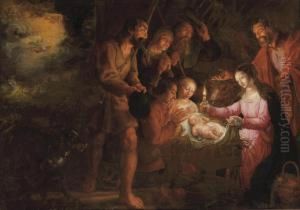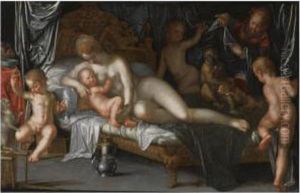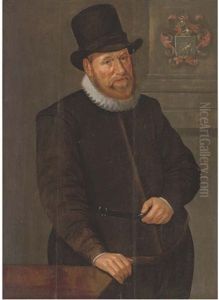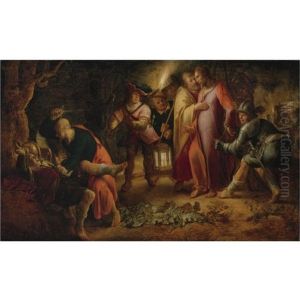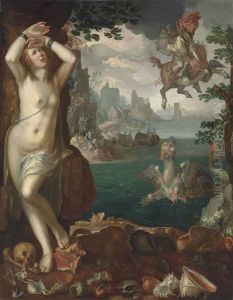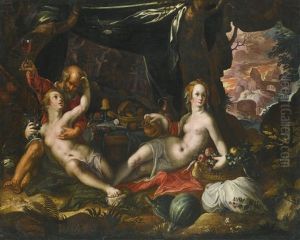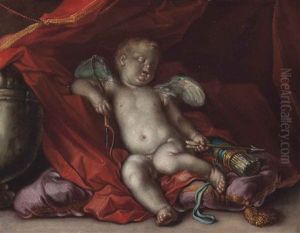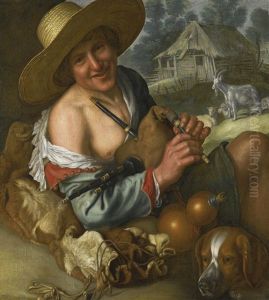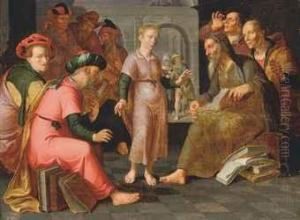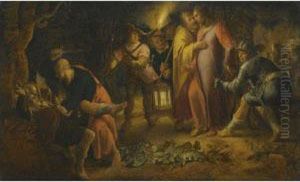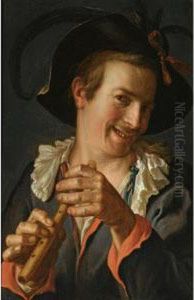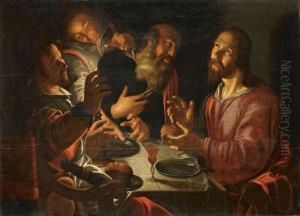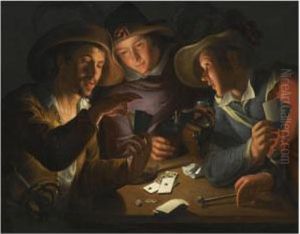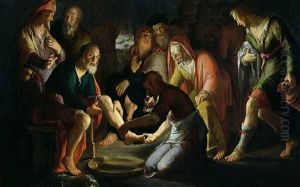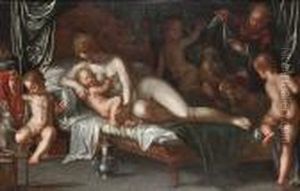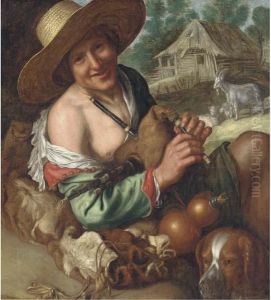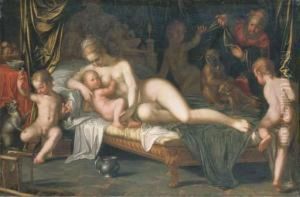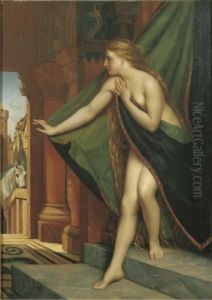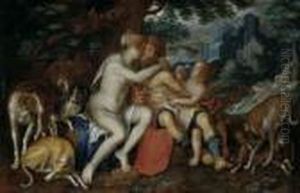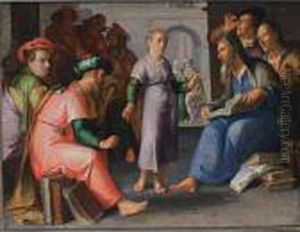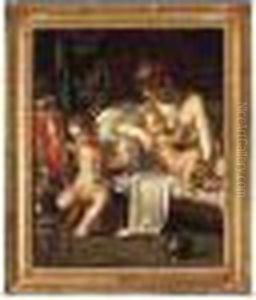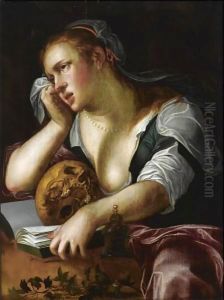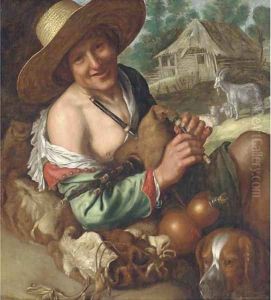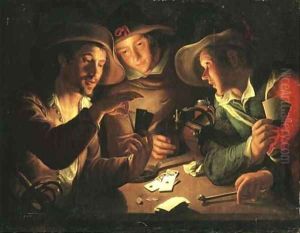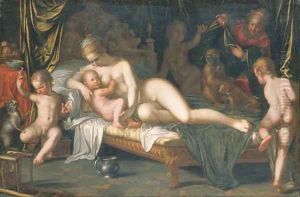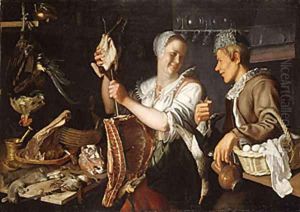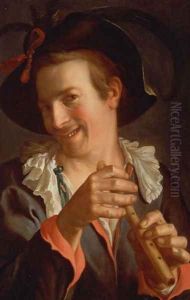Peter Wtewael Paintings
Peter Wtewael was a Dutch Golden Age painter, born in Utrecht in 1596. He was the son of the more famous Dutch painter Joachim Wtewael, who was well-known for his small and highly finished cabinet pictures on copper. Peter Wtewael, following in his father's footsteps, also became a painter, but he is not as well-documented as his father, which makes details about his life and work somewhat more obscure.
Peter was likely trained by his father, Joachim, and his work suggests that he was influenced by his father's style, which included a fondness for mythological and biblical scenes painted with a meticulous technique. However, Peter Wtewael also appears to have been influenced by the Caravaggisti, the followers of Caravaggio, as evidenced by his use of chiaroscuro and a more realistic approach to figures and scenes compared to the often more idealized and stylized work of his father.
Despite the clear talent and the quality of his work, Peter Wtewael did not achieve the same level of fame as his father. His oeuvre includes genre scenes, portraits, and religious subjects. One of his most notable works is 'The Kitchen Maid,' which showcases his skill in still life arrangement and his ability to capture the textures of food and kitchenware.
Peter Wtewael continued to live and work in Utrecht throughout his life. His works have been collected and exhibited in various museums, reflecting his contributions to the Dutch Golden Age of painting. He passed away in Utrecht in 1660. The legacy of the Wtewael family in the arts was significant during their time, and today Peter Wtewael's paintings are studied for their connection to the broader trends of Dutch painting and his unique interpretation of the Caravaggesque style.
